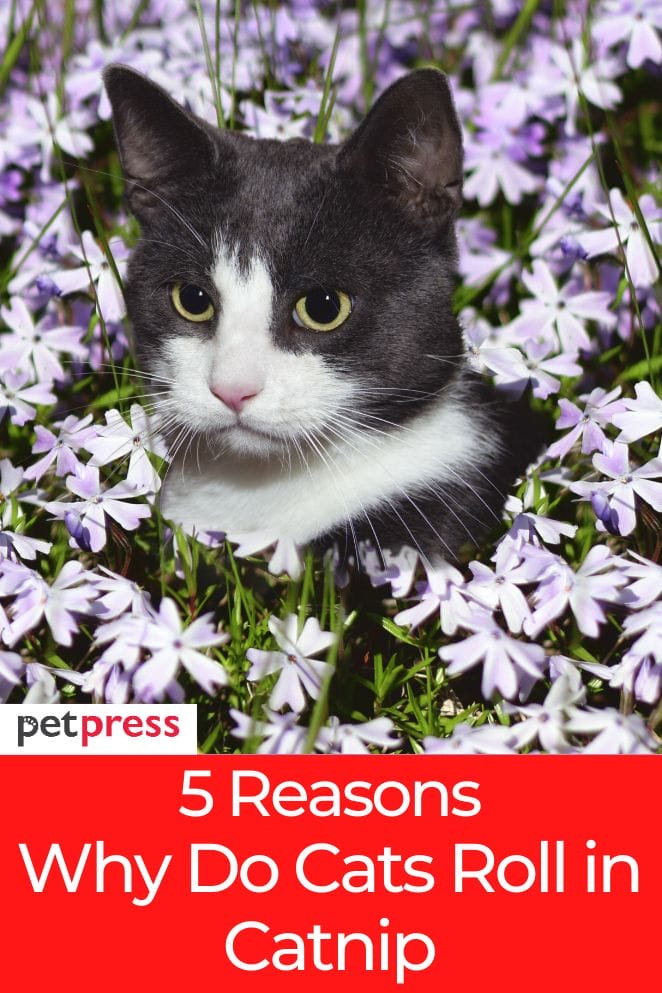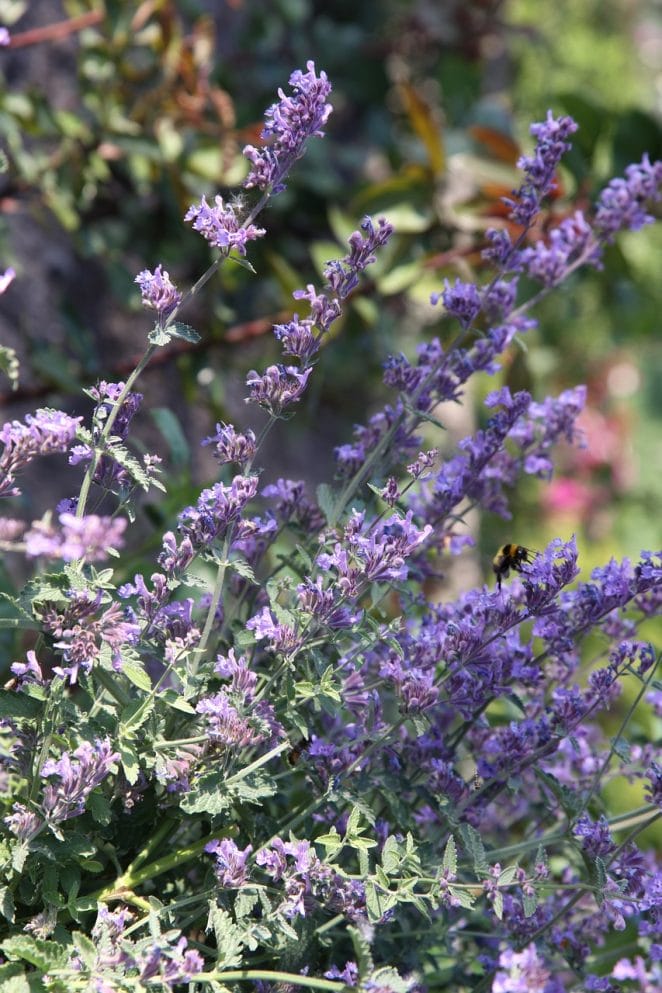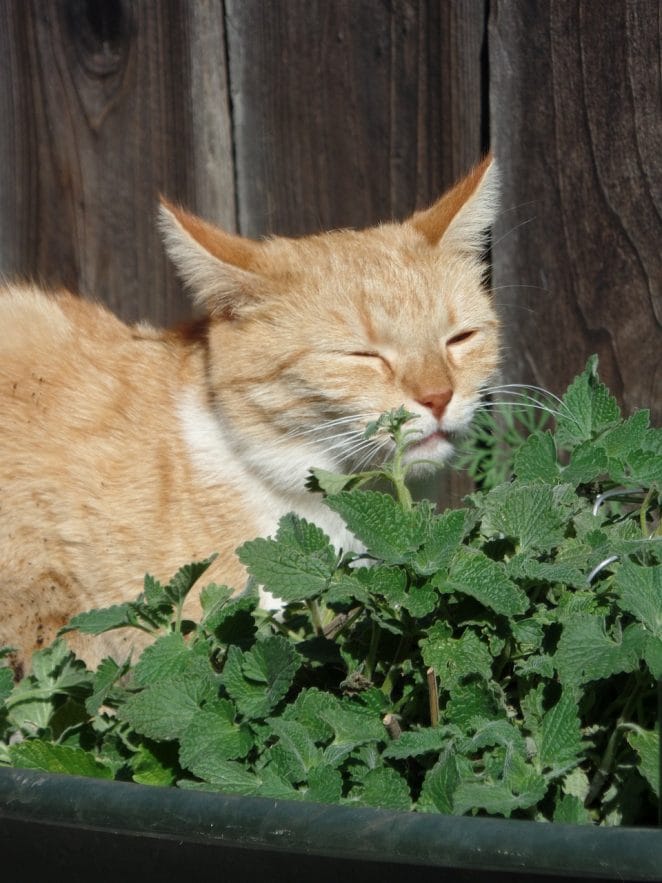
Cats have a long history of interacting with catnip, and most cats seem to love this aromatic herb.
Cat owners often give their cats toys stuffed with or sprayed with catnip, but why do cats roll in it?
It turns out that there are several scientific explanations as to why cats react so positively to catnip and often roll in it when they can access it.
Understanding the science behind the behavior of cats rolling around in catnip can help us to better understand our feline friends.
How does catnip affect cats?
When cats are exposed to catnip, they experience an altered state of consciousness.
This is due to a compound called nepetalactone which is found in the volatile oils of the plant.
When this compound binds with special receptors on a cat’s nose and tongue, it triggers neurological changes that cause them to become more energetic, playful, and frisky.
Cats may rub their faces against the catnip plant to further release the oils in order to maximize this reaction.
In addition to stimulating energetic activity, nepetalactone also alters cats’ perception of their environment.
They become more sensitive and responsive to smells and textures around them, leading them to roll around in the plant.
Why do cats roll in catnip?

There are several reasons behind this behavior. The most likely explanation for why cats roll in catnip include:
To make the most of the nepetalactone released from the catnip plant
When cats roll in catnip, they are likely attempting to get the maximum amount of nepetalactone that the plant can offer.
Rolling around serves to release more of the oils into the air and onto their fur so that they can absorb a higher concentration of it.
This reaction is similar to when cats rub up against things in order to spread their own scent.
To mark their scent on the plant
Rolling in catnip may also be a way for cats to mark their territory.
Cats have scent glands located on various parts of their body and when they roll in catnip, they are releasing pheromones from these glands onto the plant.
This lets other cats know that this particular patch of catnip has been claimed by a certain cat, and serves as a warning for others to stay away.
It’s pleasurable and fun
Rolling around in catnip can also simply be a fun activity for cats.
This behavior is often accompanied by purring and kneading, which indicates that the experience is a positive one for cats.
By rolling around in the plant, cats are able to take pleasure in the intense reactions that they experience from exposure to catnip.
To spread the scent of catnip throughout their environment
Rolling in catnip can also be a way for cats to spread its scent throughout their environment.
Specifically, they may do this in order to attract other cats and extend the area where the pheromones from their own glands can be smelled by other cats.
This helps to create a larger area that is claimed by the cat, which can help to increase their sense of security and territory.
To collect some of the plant’s oils on their fur
Cats may also roll in catnip in order to collect some of its volatile oils on their fur.
By doing this, they can then spread it around on other surfaces and objects around the home.
This allows them to extend the effects of the nepetalactone and enjoy it even after they’ve left the catnip plant behind.
Is catnip safe for cats?
Catnip is generally considered to be safe for cats and can even offer some health benefits.
In small doses, it can help to relieve anxiety and stress in cats, as well as act as a stimulant that encourages them to exercise more.
However, cats should always be supervised while they are around catnip plants and excess exposure may lead to digestive problems.
It’s always best to consult with your veterinarian about the safety of catnip for your particular cat before introducing it into their environment.
What are the alternatives to catnip?

There are a few alternatives to catnip that can also provide cats with similar stimulating and calming effects. These include:
Silvervine (Actinidia polygama)
Silvervine is a plant native to Japan and China that produces two types of stimulants – Actinidine and Diervilline.
These compounds are known to have similar effects on cats as nepetalactone, the active ingredient in catnip.
Silvervine stimulates cats to become more energetic and can help them relax.
It can also help cats to feel less anxious, making it an effective natural remedy for stress and anxiety.
Silvervine is safe for cats in small doses and should always be supervised when consumed.
Tatarian honeysuckle (Lonicera tatarica)
Tatarian honeysuckle is a shrub native to Northern Asia and Europe.
It produces an essential oil that cats love and can act as a stimulant for them, much like catnip.
Tatarian honeysuckle is safe for cats in moderate doses, but it should always be supervised when ingested.
The essential oils produced by the plant are known to have antiseptic, antibacterial, and anti-inflammatory properties which can help cats with various skin and gastrointestinal conditions.
In addition, it is thought to boost the immune system in cats and promote overall health.
Valerian root (Valeriana officinalis)
Valerian root is an herb native to Europe and Asia that has a strong scent.
Cats are known to be attracted to this smell, and it can act as a stimulant for them in much the same way as catnip does.
Valerian root is safe for cats in small doses, but should always be supervised when ingested.
It can help relieve stress and anxiety in cats, as well as promote better sleep.
Cat grass (hordeum vulgare)
Cat grass is a type of barley grass that is often grown at home.
It does not contain the same active compound as catnip, but cats are attracted to its scent and can use it for eating and playing.
Cat grass contains important vitamins and nutrients that are beneficial for cats, such as Vitamin A, Vitamin C, Iron, and Fiber.
It is safe for cats in small doses, but should always be supervised when eaten.
Cat grass can help reduce hairballs, aid digestion, and improve a cat’s overall health.
The Bottom Line
Overall, catnip is a safe and natural way to provide cats with entertainment, stress relief, and exercise.
However, it’s important to always supervise your cat when they are around or consuming the plant.
There are plenty of alternatives available as well that can offer similar benefits for cats.
Consult with your veterinarian for more information about which plants may be best for your particular cat.
It is always best to talk to your veterinarian before introducing catnip or any of these alternatives into your cat’s environment.
With the right supervision, these natural remedies can provide cats with lots of fun and stimulation while also promoting better health overall.


GIPHY App Key not set. Please check settings